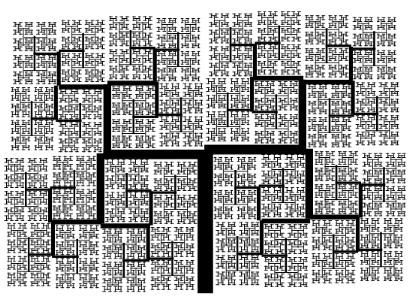1.4. Various categories of ways in urban environment
The junction between the two criteria enumerated upper will
thus make it possible to distinguish four categories of ways:
· Access roads to the agglomeration built for the through
traffics such the interpolate connections which have origins and/or external
destinations with the agglomeration and which are consequently, the privileged
field of the car.
These axes, for their integration and the prospects which they
offer, can cover two categories:
o Highway axes or with highway matters of which the
characteristics can allow a high speed of about 90 to 130 km/h. These ways have
characteristics such the need for installation of the grade-separated
junctions, the prohibition of access to the bordering populations and a parking
being carried out except roadway system (out of the roadway thus on verges
envisaged for this purpose and named emergency lanes).
o The structuring ways (insub urbanzone) on which the
functional relationships to the environment are restored. Coherence in
installations on these ways ensures safety, fluidity and location: Speed is
limited and the crossings are made possible by the installation of fires and
the plates of crossings.
· Loop lines which protect the heart of the agglomeration
and the other secondary centers: they have as a function to protect the urban
centres from parasitetraffic and to connect between them axes of penetration.
These ways offers a time-saver for the exchange and through traffic while
releasing the centers of the agglomeration of any additional and useless
traffic. Their installation is completely integrated into urban infrastructure;
speed is restricted there with a limit lower than the access roads to the
agglomeration. On these ways, the principal characteristic is the optimal
research of the fluidity of circulation.
The installation of the crossroads between the loop lines and
the penetrating ones are paramount. To encourage with the use of skirtings, it
would also be necessary to offer a good legibility to the crossroads and to set
up an effective marking out.
· Ways of penetration towards the centers which will have
to support constraints arranged hierarchically according to the density of the
crossed middle: The local life on these ways becomes more perceptible.
«Generators» of displacements (trade, services and public equipment)
fit bit by bit in the urban infrastructure. The soft modes can be present, but
the place of the motorized vehicles prevails. Dimensions will have to thus be
generous for the motorized vehicles, but the characteristics of these ways
(bordering accesses very few, restriction of side parking...) would not make
economic a speed limit to 30 km/h. One can classify in this category certain
avenues and important ways inter districts as well as the majority of the ways
of zones of activities.
· Access roads intern with the various communes or
constituent districts the agglomeration. With this scale, the roadway system is
regarded as being a public space where a balance between the circulatory
functions and local life must prevail (cohabitation between the various users).
The description of the stakes showed that a limitation to 30 km/h constitutes a
good compromise between the motorized traffic flow, the safety of the
pedestrians, cyclists and the quality of the frame of life in the districts.
This typology of installation can apply to a very broad range of ways: service
roads of residential district, ways of retail parksand streets of downtown area
where bordering activities (trade, services, tourism...) a frequentation
important pedestrian and cyclist induce. She can also have the aim of
dissuading the through traffics when those have more adapted alternative
routes.

Figure 1: Dendritic
structure in a surface.
Source: MANDELBROT, B. The fractal Geometry of
Nature, W.H. Freeman, New York, 1983
| 


